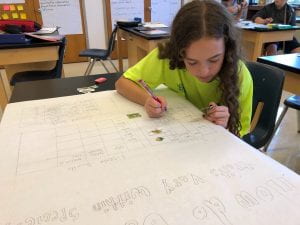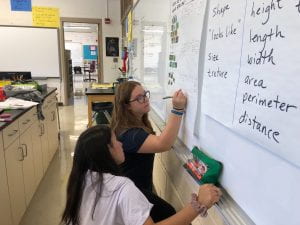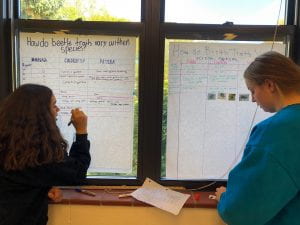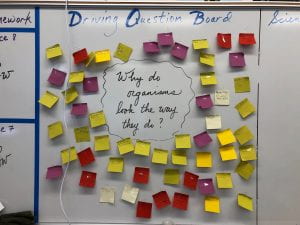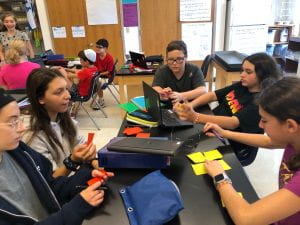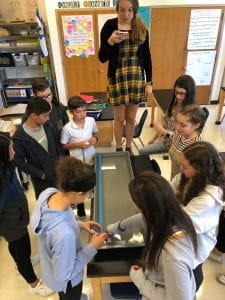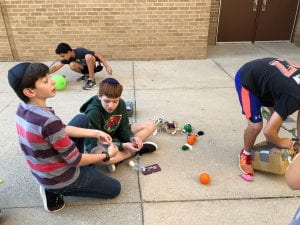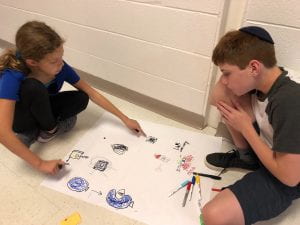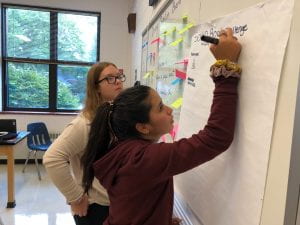The 8th graders have been spending the week analyzing the traits of three different types of beetles in order to answer the question-How do beetle traits vary across and within a species? From this analysis they will develop a scientific argument by making a claim, supporting their claim with qualitative and quantitative evidence and explaining how their evidence supports their claim through sound reasoning. The ability of a student to develop a strong scientific argument based upon evidence is a critical skill in scientific inquiry. Students often find writing the reasoning piece to be the hardest part of writing the argument. What they don’t realize is that I already see so much improvement in their ability to think and express their thinking aloud and in writing since last year. They are all making huge strides! The writing process begins next week…be sure to ask your child how it’s going :).
Monthly Archives: September 2019
8th Grade-Why do organisms look the way they do?
At the end of this week, the 8th graders began thinking about the driving question to their next unit-Why do organisms look the way they do? Every unit in science class begins with a carefully chosen phenomenon. This phenomenon is used to drive student inquiry. It gets students to make observations and develop ideas. From this thinking student begin to ask questions. It is these questions that gives students ownership of their learning and drive the learning journey forward. Students continually add questions to the Driving Question Board as they have them and develop answers to the questions over the course of their study with the intention of answering the big driving question by the end. Ask them what questions they have about genetics. But, don’t give them the answers! They will figure it out on their own :).
8th Grade-Who’s soap boat went the farthest?
The goal of the 8th grade Soap Boat Challenge was to SYSTEMATICALLY design a soap boat that would go the farthest distance. The “systematic” part was the key. Students were supposed to change one variable at a time to see how it affected the boats movement. However, this was easier said than done for many. Their excitement to succeed in the challenge (and win :)) made it difficult for many students to slow down and test variables in a systematic way. Student self-assessments, however, were telling in that they were able to articulate how they had been systematic or not and what they would have done differently next time. Many students posted their process and prototypes on their blogs. Check them out!
7th Grade-Did your egg survive the fall?
After lots of creating and designing and testing and revising, Monday marked the day the 7th graders dropped their egg apparatuses from the second floor window of the building. Some eggs lived; some didn’t. But, all 7th graders lived through and learned about the engineering process. Check out their blogs to see their final prototypes!
Welcome Back 7th and 8th Graders!
And, in the blink of an eye another school year begins…
After two days of adventure, building relationships and laughs and smiles, the 7th and 8th graders began the work of “doing” science and engineering. Several of the 7th graders asked me if the class to do an Egg Drop Challenge in which they have to design and construct an apparatus that will prevent an egg from breaking as it free falls from the window of the building. What? Kids excited and interested in an engineering challenge…game on! I was happy to make it happen :). The drop is on Monday so stay tuned for the results.
Meanwhile, the 8th graders were challenged to manipulate the variables of a soap boat system with the goal of making it go the farthest. Students changed the boat shape, boat size, amount of soap and many other things to see what might work best.
Throughout these days, I was reminded how “fast” students like to go. So many of them get lost in the excitement of the challenge that they forget to slow down and really plan and think through a challenge in a systematic way. This was a good reminder of how important it is for me to provide a framework that slows students down and encourages deep, critical thought while still allowing for free thinking and development of ideas. Ask your kids about their challenges!



